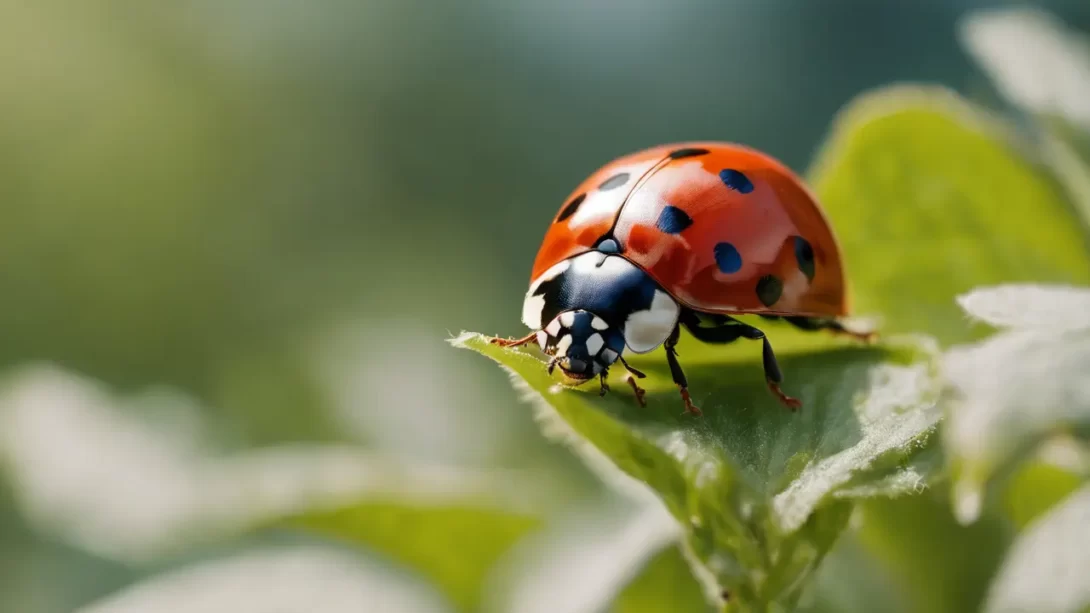Ladybugs, belonging to the Coccinellidae family, are a familiar sight in gardens worldwide. These small, often brightly colored beetles are not only charming but also play a vital role in the ecosystem. Despite their popularity, there’s a common misconception about their diet that leads many to wonder: are ladybugs carnivores? This article explores the true nature of ladybugs’ eating habits and their impact on garden health.
Ladybug Diets
Ladybugs are indeed carnivorous. Contrary to the belief that they may feed on plants, these beetles primarily prey on other insects. Their diet mainly consists of aphids, a common garden pest, making them a natural form of pest control. Ladybugs also consume other soft-bodied insects like scale insects, mites, and whiteflies. The voracious appetite of ladybugs for these pests underscores their importance in maintaining the health and balance of garden ecosystems.
Ladybugs as Beneficial Garden Insects
In the context of gardening, ladybugs are invaluable allies. Their carnivorous nature directly benefits garden health by controlling populations of harmful pests. A single ladybug can consume up to 5,000 aphids in its lifetime, showcasing their efficiency in pest management. This natural pest control is especially beneficial in organic gardening, where chemical pesticides are avoided. By preying on pests, ladybugs help in preserving the health of plants and reducing the damage caused by these pests.
Lifecycle and Feeding Patterns of Ladybugs
Understanding the lifecycle of ladybugs provides insight into their carnivorous behavior. Ladybugs undergo four stages: egg, larva, pupa, and adult. Each stage has its unique feeding patterns. The larval stage, in particular, is when they are most voracious, consuming hundreds of aphids as they grow. As adults, ladybugs continue to feed on pests but at a slower rate. This lifecycle-driven appetite for pests underlines the importance of ladybugs in controlling garden insect populations throughout most of their lives.
Attracting and Supporting Ladybugs in Your Garden
Encouraging ladybugs to reside in your garden isn’t just beneficial for pest control; it also contributes to the overall health of the ecosystem. To attract them, focus on planting a variety of flowering plants, especially those that produce a lot of nectar and pollen, like marigolds, dandelions, and cosmos. These plants attract aphids, which in turn lure ladybugs. Additionally, providing a habitat free from pesticides is crucial. Ladybugs are sensitive to chemicals, and the use of pesticides can harm them directly or deplete their food sources.
Creating a ladybug-friendly environment also involves offering them shelter. Ladybugs seek out areas where they can hide and lay their eggs, such as leaf litter, under rocks, or in natural crevices. Ensuring these habitats are available in your garden will encourage ladybugs to stay and reproduce, maintaining a healthy population to keep pest numbers in check.
Practices to Avoid That May Harm Ladybug Populations
While encouraging ladybugs in your garden, it’s crucial to be aware of practices that can inadvertently harm them. Broad-spectrum insecticides, even those labeled as organic, can be detrimental to ladybugs. These chemicals don’t discriminate between beneficial insects and pests, potentially wiping out ladybug populations. Instead, opt for targeted pest control solutions or natural methods. Additionally, importing ladybugs from commercial sources can disrupt local ecosystems and may introduce diseases. It’s better to attract native ladybugs naturally.
Conclusion
Ladybugs, with their carnivorous diet, play an essential role in garden ecosystems. They are efficient predators of common pests like aphids, contributing significantly to the health of plants and the balance of nature in gardens. By understanding and supporting their lifecycle, and by creating a welcoming habitat, gardeners can harness the natural pest control benefits ladybugs offer. Remember, a garden teeming with ladybugs is a sign of a healthy, thriving ecosystem, one that benefits plants, humans, and the environment alike. Embracing these charming carnivores is not just good for your garden; it’s a step towards more sustainable and ecologically sensitive gardening practices.



